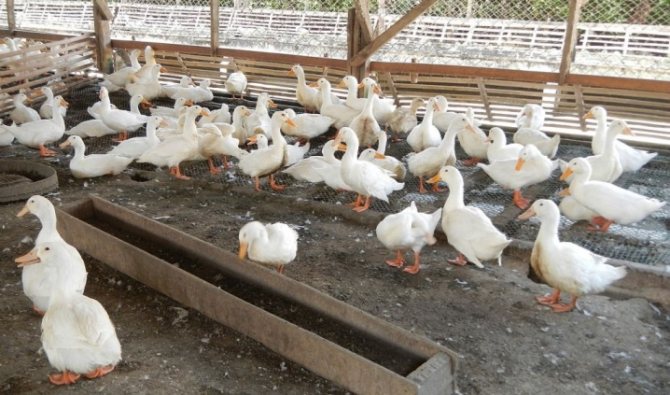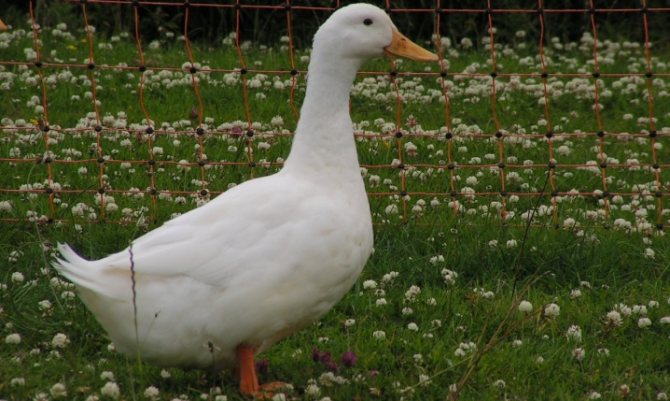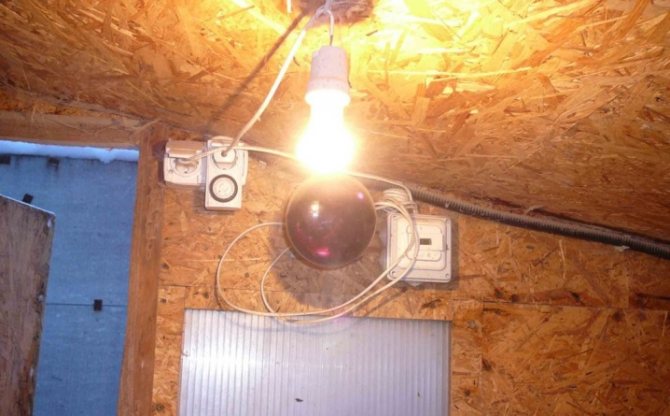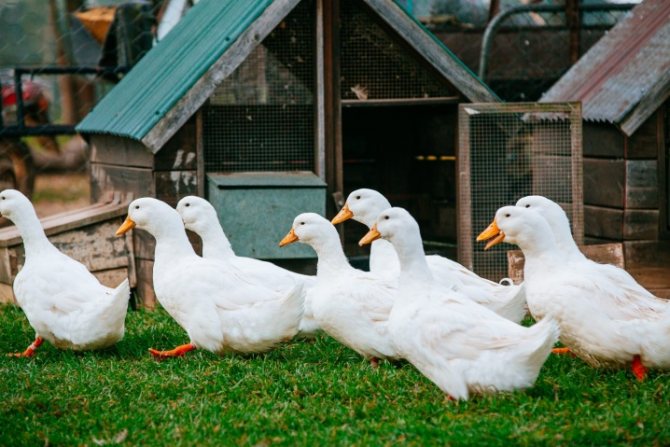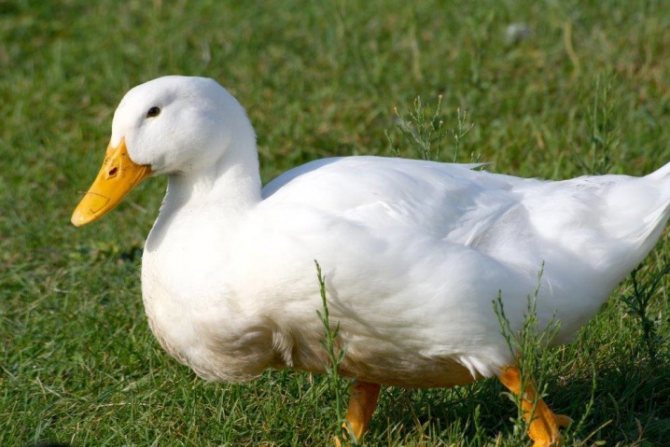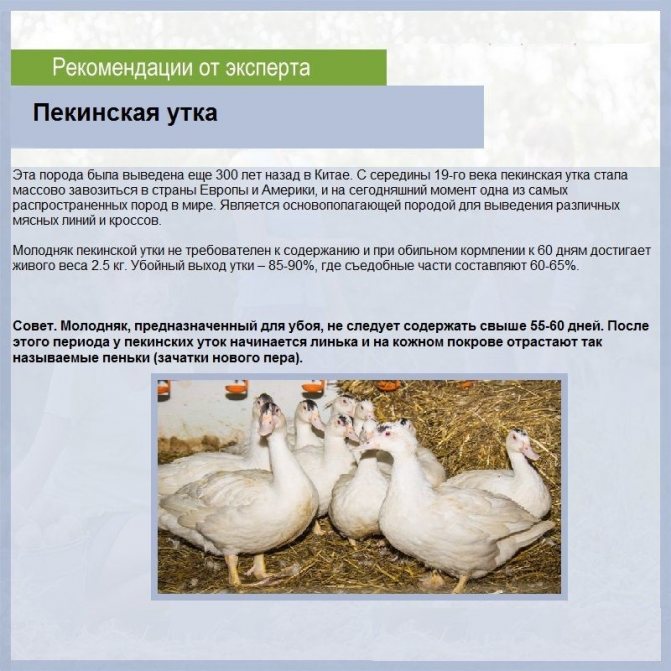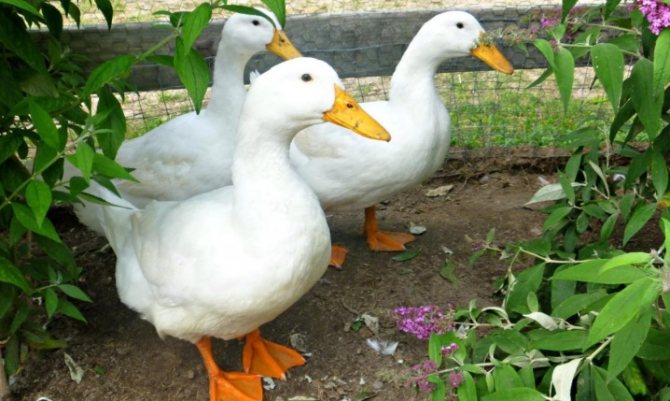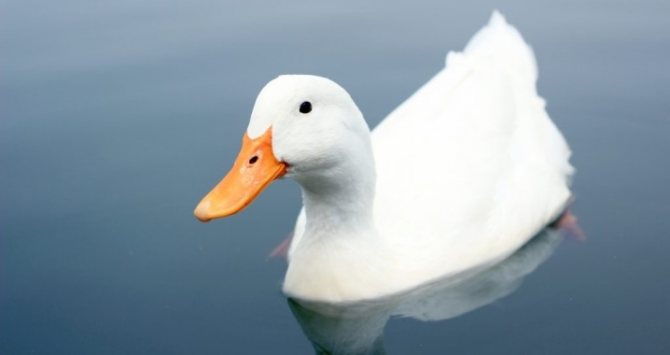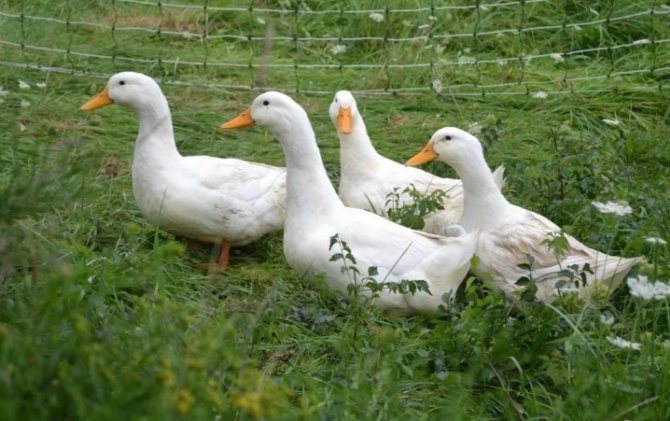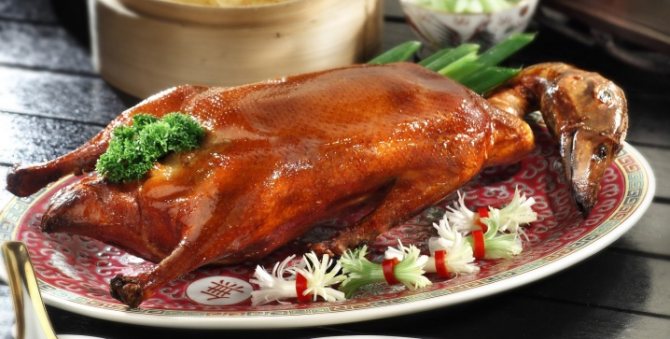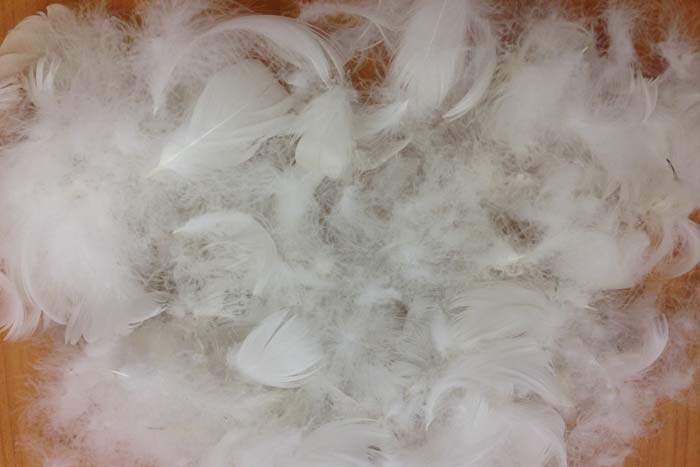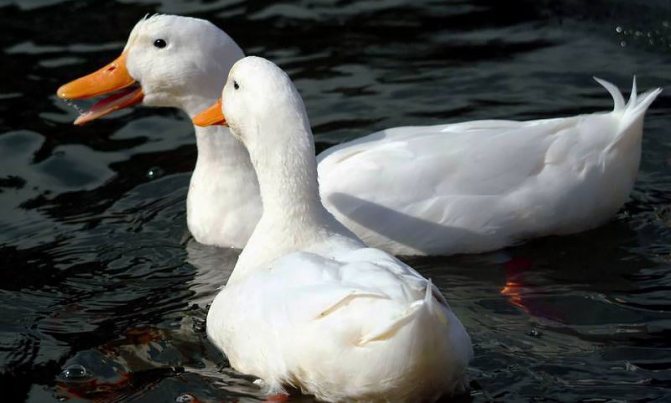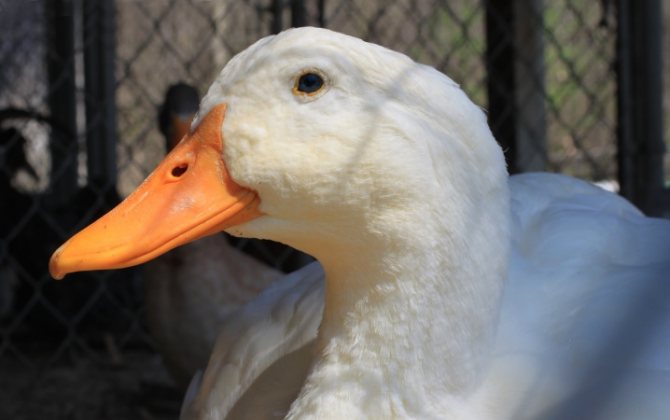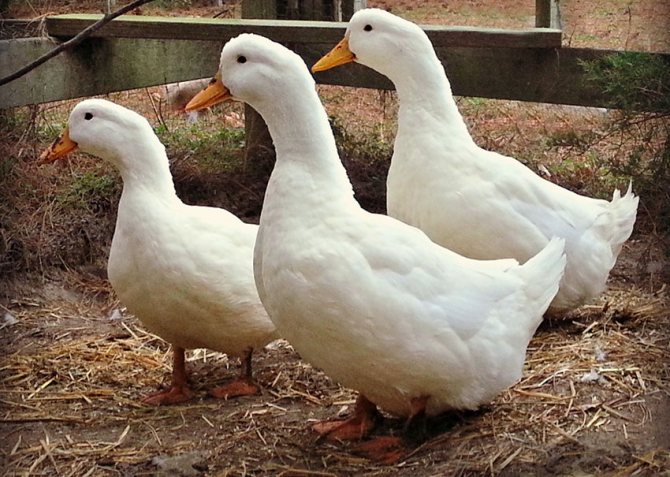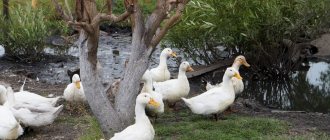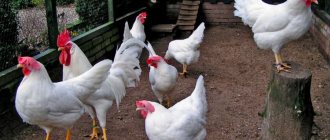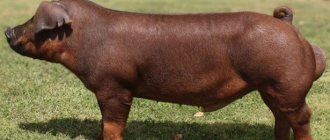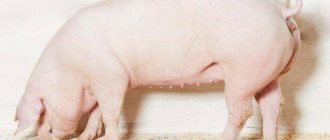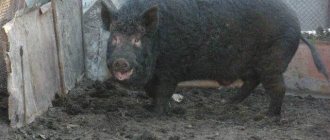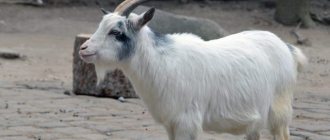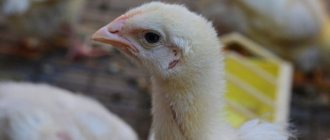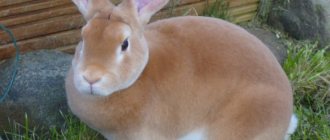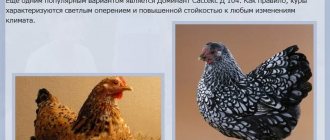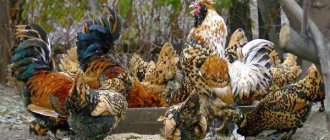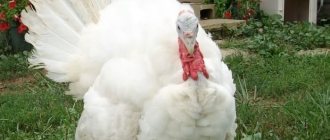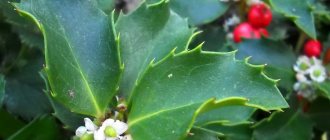Domestic ducks are of great interest for breeding in private farmsteads. They fatten up quickly, get almost no sickness, adapt well to various climatic conditions, eat whatever they are given. The most widespread breed in Russia is the Peking duck; it can most often be found in private estates. This choice is not accidental: this breed has a number of outstanding characteristics that attract many duck breeders to it. Consider what they are and how to properly raise this bird in the household.
Origin and description
The breed was bred in Beijing in the 18th century, after which it quickly spread throughout the country and became the leading breed. Then she was brought from China to Europe and America, where she displaced many local breeds. This was due to the excellent productivity and high quality of their meat.
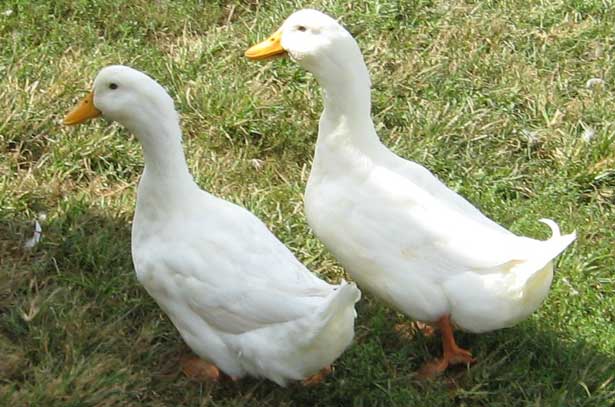
According to the description of the standard of the Peking duck breed, you can imagine how its typical representative should look like:
- wide, rounded, elongated body, slightly raised in front;
- elongated head with a flat profile;
- of medium length, almost straight neck;
- dark eyes, spoon-shaped beak, long, flat and wide, light yellow or orange with a white tip;
- wide, long, without keel chest;
- the back is long and wide, somewhat convex, sloping towards the tail;
- slightly raised tail, consisting of closed feathers;
- rounded, without skin folds, belly;
- long wings well fitting to the body;
- legs of medium length, located approximately in the middle of the body;
- the feather is thick, well adhering to the body.
The plumage of the Peking ducks is white, less often cream in color, the legs are dark yellow or orange with light-colored claws.
Gross exterior faults: thick neck, thick beak, large coarse head, strongly raised body, curly plumage, curls on the neck, short body. Low weight is also considered a defect.
Appearance
Peking duck attracts breeders not only with its productivity, but also with its appearance.
Exterior:
- powerful torso;
- large back;
- orange beak;
- white plumage;
- curved neck;
- raised tail;
- blue eyes;
- dense plumage.
Strong wings have a large span. In a calm state, they fit snugly to the body. The drake always looks more powerful than a duck and has a calm character, he never starts fights with males of other breeds, if he finds himself in the same territory with them.
Productivity characteristics
Peking ducks are meat breeds, they are early maturing and already in 2-2.5 months grow so much that they are suitable for slaughter. By this age, the mass of the drake is 3 kg, the duck is slightly less and weighs 2.5 kg. Adult females weigh 3 kg and males 4 kg. Due to the same exterior and plumage, mass is considered the main feature by which a drake can be distinguished from a duck.
In addition to meat, eggs are also obtained from Peking ducks. Young females begin to lay at seven months of age. Each season lays up to 120 eggs with an average weight of 70 g. The color of the egg shell is from white to yellowish.
Advantages and disadvantages of the breed
The advantages of this breed have long been known to those poultry breeders who keep ducks in the household for a single year. They note that the representatives of the breed:
- grow rapidly;
- do not sort out the food, but eat whatever is offered to them;
- firmly endure both cold and heat;
- can do without reservoirs;
- reach a slender weight in a short time;
- give good quality meat;
- ducks have good egg production.
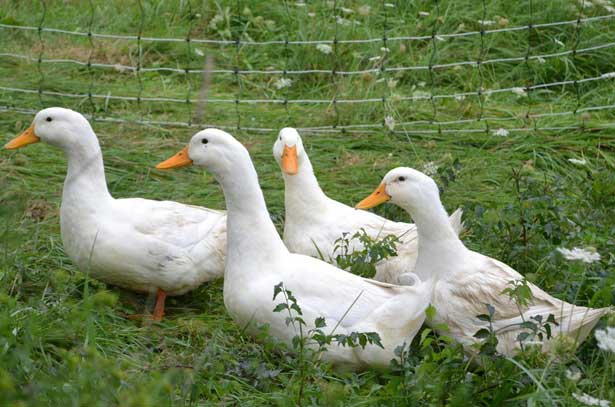

Disadvantages of the breed that Peking ducks demonstrate:
- sensitivity to excessive moisture;
- due to their highly excitable nervous system, they often behave restlessly, make noise and scream;
- they have fatty meat that is not to everyone's taste and is not suitable for everyone;
- females are pretty bad brood hens, so if ducks don't want to hatch eggs, they will have to hatch in an incubator.
These features of the Peking ducks can be adjusted to some extent, but it is impossible to get rid of them, so they must be taken into account when choosing a breed for breeding at home.
Farmers reviews
Nikolay, 35 years old, Vladivostok
Peking duck is the best meat breed. I recommend it to everyone for breeding! The weight of the finished gutted carcass is more than 2 kg. The meat is tender, tasty, soft, not fatty. Suitable for diet food. However, when keeping, special attention must be paid to the feed. The growth and development of ducklings will depend on quality food. The better the food, the faster the ducklings will grow up and gain the necessary weight. I noticed that with good food, chicks are less susceptible to all kinds of diseases.
Arthur, 40 years old, Aleksandrovsk
I want to say that no matter how much I planted a Peking duck so that it could breed offspring, there was no sense. And all because Peking women have a reduced maternal instinct. Therefore, I use a special incubator to breed friendly offspring. Viable chicks: from 10 eggs laid, 8 ducklings are obtained. The rapid growth of chicks covers all the costs of their maintenance, since at the age of 2 months you can slaughter and get good meat with excellent taste. In 1 season, 3 offspring can be raised.
Video about the breed:
Breeding at home
With proper care, the profitability of breeding Peking ducks at home can be high. You can get ducklings both naturally and artificially, that is, lay eggs on a hen or use an incubator.
Forming families
Duck colonies consist of 1 drake and 5 ducks. It is in this ratio that the herd should be formed during the breeding season. Ducks fly in the spring, after which they sit on eggs and hatch the ducklings. If they do not show interest in incubation, then there is nothing left but to use the incubator.
You can breed not only purebred white Peking ducks, but also cross them with other breeds, for example, Indo-Ducks.
Recommended to read
Features of keeping Mulard ducks at home
Features of keeping ducks Muscovy ducks at home
What to do, ate ducks and ducklings fall to their feet
Review of the Bashkir duck breed, their maintenance and breeding
Breeding ducklings naturally
If, nevertheless, the duck wants to sit on the eggs, then you need to equip a nest for it: put a wooden box in the farthest corner of the house, spacious enough so that the eggs and duck can freely fit in it. Peking ducks incubate eggs for 27-29 days, during which it is necessary to provide the hen with food and water. From the second half of the incubation period, a container of water should be placed near the duck, in which it will swim. This is necessary because the duck eggs need to be moistened in order for the thick fatty film covering the egg to wear out. If this is not possible, after 15 days, it will be necessary to spray the hatched eggs with water every day. The hatched ducklings can be left under the hen.
Using an incubator
In most cases, an incubator is used to breed ducklings in the household. Only eggs from healthy birds are suitable for laying.They must be intact, without cracks, spots of various origins, standard sizes and shapes typical for the breed. They should be fresh, no more than a week after demolition.
The temperature at which the incubation of duck eggs takes place should be at least 38 ° C in 1 week, and the humidity should be at least 70-80%. They must be turned over every 8 hours so that they evenly warm up under the lamps. From 8 to 14 days t 37.8 ° C, humidity 60%. From 15 to 25 days, the parameters are left the same, but for 15-20 minutes, airing and spraying the eggs are carried out 2 times a day. From 26 to 28 days - t 37.5 ° C, humidity 85-90%, turning and airing are stopped. On the day of hatching, all ducklings should be left in the incubator until they are completely dry.
Other possible illnesses
Aspergillosis is terrible primarily for young animals. Symptoms include labored, very heavy and intermittent breathing, wheezing, beak fluid, exhaustion, and decreased appetite and growth. Paralysis of the wings and legs is not excluded. Infected birds need to add nystatin to the feed, and 0.05% copper sulfate (a preparation of copper sulfate) to drinkers with water. Completely disinfect the poultry house, discard bedding, old food.
Blocked goiter: the reason is the ingestion of small objects, large unchewed pieces of food into the throat and esophagus, the use of food that has stuck into lumps. Goiter can be cleaned on its own by turning the bird upside down. Otherwise, you need to urgently contact your veterinarian to open the goiter.
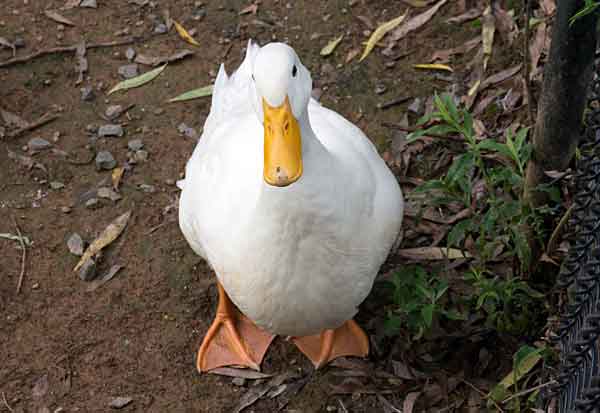

Coccidiosis is an infection that leads to wasting, lethargy, lethargy, weight loss and egg production, and bloody, frothy stools. To avoid this disease, add a little sulfadimezin and coccidin to the water. The infected one must be isolated from healthy birds, and the poultry house must be disinfected with a weak solution of potassium permanganate and 3% formalin solution.
If you received useful information, please like the article and share it with your friends.
Ducklings care
The hatched ducklings need to be examined and transferred to a separate box or brooder, where they are kept for the first few days. At this time, it is important for the chicks to be warm, so a red lamp must be installed above them. For the first 5 days, the temperature should not fall below 30 ° С, then for another 5 days - not lower than 25 ° С, after which it is reduced to 20 ° С within 3 weeks. From 2 weeks of age, ducklings can be released into the fresh air, and from 4 weeks - into the water. In the poultry house, keep on a bed of peat, sawdust, sunflower husks.
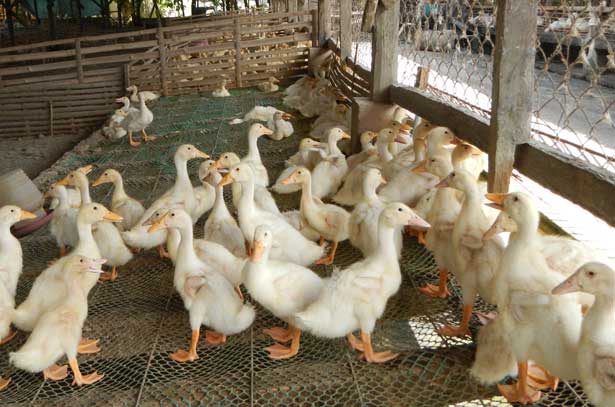

In the first days of life, you need to feed Peking ducklings with a boiled egg with herbs and cottage cheese, then give them semolina or millet porridge with the addition of vegetables, root vegetables, vegetable tops, lettuce, nettle or other greens, which should be at least 1/4 of the total weight of the feed ... It is imperative to add chalk, salt, shell rock, mineral and vitamin supplements, and dairy products to the mixture. Monthly ducklings can already be fed whole grains and bran. Such a diet must be adhered to for the entire period of feeding ducklings for meat, until their weight reaches 3 kg in 2 months. Further feeding is impractical, the bird slows down growth, becomes fat, and does not rationally spend feed units. In addition, then it begins to shed and the rudiments of a new feather form on the skin, which are difficult to remove from the carcass.
Features of keeping birds
In general, caring for Peking ducks is no different from caring for other breeds. Housing for them should be spacious, since ducks do not like tightness, dry and light. It should not be allowed to be damp and there are drafts in it, because ducks tolerate dampness and drafts much worse than cold. Keep the bird population on a thick bedding, which must be cleaned regularly and replaced every couple of months.
The temperature in the poultry house should be comfortable, in summer not higher than 25 ° С, in winter - not lower than 10 ° С.During the cold season, ducks need to turn on the lights, bringing the length of the day to at least 12 hours so that they can fly well.
In addition to the poultry house, ducks need to be provided with a walking area where they will walk in the fresh air. It is necessary to install containers with water for bathing birds. In summer, Peking ducks can be kept outside all day and driven into the barn only at night. If there is a body of water nearby, you can drive the Peking ducks there.
How to keep Peking ducks?
Keeping Peking ducks is not difficult. They are not demanding on care, conditions, but this breed reacts very badly to any changes in keeping or feeding, therefore it is necessary to provide it with normal conditions from the first days and maintain them all the time.
- Peking duck very quickly acclimatizes to new conditions. She calmly endures both heat and cold.
- The poultry house equips itself according to the number of individuals. There are 1.5-2 ducks per square meter. The floor must necessarily rise 25 cm from the ground. This protects birds from rodents and winter cold. Inside the premises there should be normal ventilation, windows, artificial lighting system.
- There should be one nest for 1-3 individuals. Sizes 40-50 cm. They can be made from old baskets, plywood, boxes, etc.
- Walking needs to be planned in such a way that the birds are spacious there. Grasses are sown inside. In winter, it is recommended to clean the snow from the enclosure and cover it with a thick layer of straw so that the ducks can be released for walking on the sunniest, warmest days, without precipitation and severe frosts.
- Reservoirs are not required for maintenance. Even without them, the Peking duck will feel good. You can just occasionally put a large basin of water in the walking enclosure so that the birds can swim in it.
- Slaughter is carried out before molting, 2 months after birth, since after molting the presentation of the carcass will be less attractive.
Cleaning is done as soon as the house gets dirty. The litter should be changed as soon as it gets dirty, as dirt is the most effective method for spreading disease indoors.
Feeding
The diet of Peking ducks should include whole grains of any cereals or mash with the addition of boiled or fresh vegetables, grated root vegetables, fruits, herbs, tops, kitchen waste, bran. To saturate food with vitamins and minerals, chalk, crushed shells, shells, salt, premixes must be added to it. You can feed Peking ducks not only with mash, but also with compound feed.
The frequency of feeding is 3-4 times a day, since these ducks have an accelerated metabolism, which is considered their physiological feature. In addition to food, they should always have clean drinking water available at all times.

